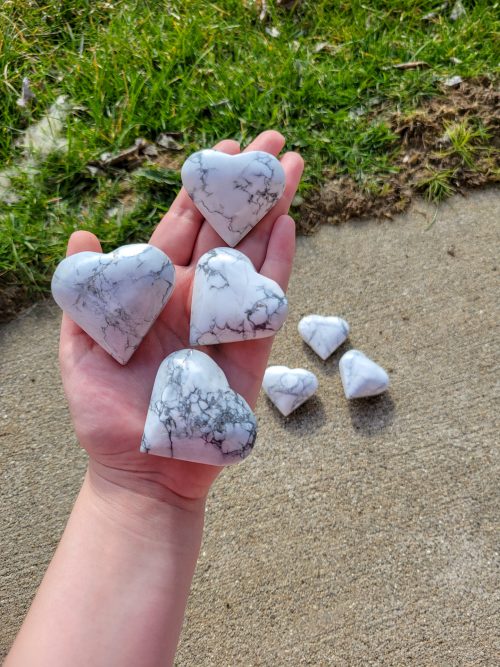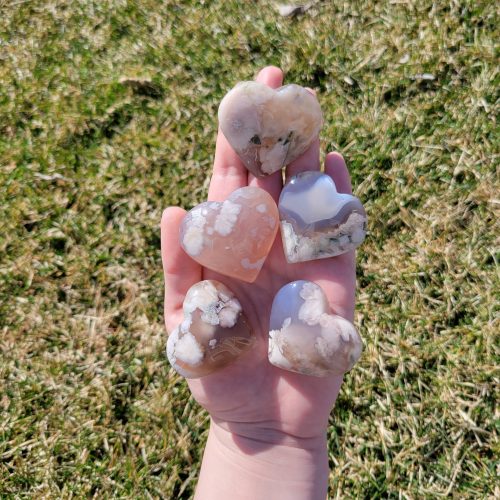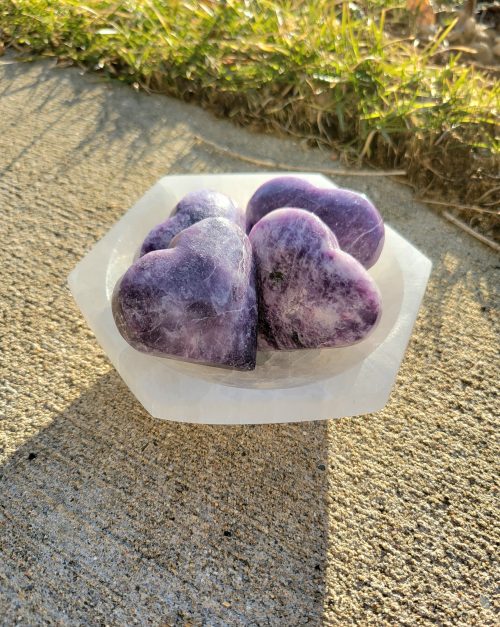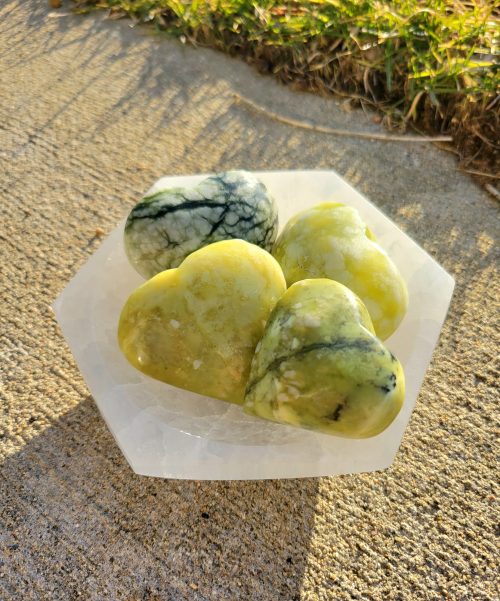-
4.5cm Wide Howlite was originally discovered in Canada by a geologist named Henry How which is where its name comes from. Howlite is formed in evaporate deposits with other borate and evaporate minerals. The outside of the mineral is not pleasant to the eye and is said to look like a head of cauliflower. However, when that is taken off, this beautiful mineral is found inside! This mineral is mainly found in Canada and the USA. ***Due to natural variations in stones, the appearance will vary***
-
5.5cm Wide Flower agate gets its name from the flower-like formations within the crystal's body. These crystals are volcanic rocks that are mainly composed of chalcedony and quartz. These crystals can vary in color; from pink to a dark grey/purple. Recently discovered in Madagascar, these crystals are believed to go back to 2000 BC. ***Due to natural variations in stones, the appearance will vary***
-
5cm x 5cm x 3cm Lepidolite is a rare, lithium-rich, mica mineral. This beautiful mineral's color ranges from pinks and reds to purple. The color comes from the amounts of magnesium found in the mineral. Lepidolite is found in Brazil, Madagascar, Australia, and many other countries where lithium is found. ***Due to natural variations in stones, the appearance will vary***
-
6cm x 5cm x 3cm Serpentine is primarily composed of one or more of the three magnesium silicate minerals: lizardite, chrysotile, and "antigorite. This mineral comes from the Earth's mantle which is just under the Earth's crust. This mineral is the state rock of California but can also be found in Russia, Greece, New Zealand, and many other places. ***Due to natural variations in stones, the appearance will vary***
-
7cm Wide Kiwi Jasper is a mix of amazonite, tourmaline, jasper, and quartz. It gets its name from the green tinge (amazonite) it has in addition to the green specks on it (tourmaline). This mineral is mainly found in New Zealand. ***Due to natural variations in stones, appearance will vary***
-
5cm - 6cm Wide Kiwi Jasper is a mix of amazonite, tourmaline, jasper, and quartz. It gets its name from the green tinge (amazonite) it has in addition to the green specks on it (tourmaline). This mineral is mainly found in New Zealand. ***Due to natural variations in stones, appearance will vary***
-
3cm - 4cm Smoky Quartz is found in the veins of igneous and metamorphic rocks. Well-formed smoky quartz is found in the cavities of metamorphic rocks. This mineral's color varies depending on where it is found. In areas where there are radioactive mineral deposits, Smoky Quartz is very dark due to the emissions. Brazil and Madagascar are the world's biggest suppliers of Smoky Quartz. ***Due to natural variations of stones, the appearance will vary***
-
3cm - 4cm Wide Septarian concretions are concretions containing cavities or cracks, called septaria. The septaria are the calcite (yellow) filled cracks at the center of the rock, indicating where the center of the concretions have shrunk, possibly during dehydration during its transformative journey over a long period of time. Septarian can be found mostly in the Gulf of Mexico and Madagascar. ***Due to natural variations in stones, appearance will vary***
-
5cm - 6cm Rhodonite is a silicate mineral usually found in metamorphic rocks that are known to have other manganese minerals in them. The manganese is how Rhodonite gets its color. These beautiful minerals can be found in Argentina, Australia, Brazil, Canada, and many other places. ***Due to natural variation in stones, appearance will vary***
-
4cm - 5cm Carnelian is a part of the Chalcedony family. It is formed when two silica minerals with different crystal structures grow together such as quartz and moganite. The firey orange and red colors come from iron oxides in the mineral. Carnelian can be found in Brazil, India, and Uruguay. ***Due to natural variations in stones, the appearance will vary***
-
5cm - 6cm Wide Sodalite is a rare mineral formed inside igneous rocks crystalized as a result of sodium-rich magma. The blue color comes from the rock that Sodalite is formed in; nepheline syenite, trachyte, and phonolite. Although the sodalite-bearing rock is rare, it can most commonly be found in the US, Canada, and Africa. ***Due to natural variations in stones, the appearance will vary***











